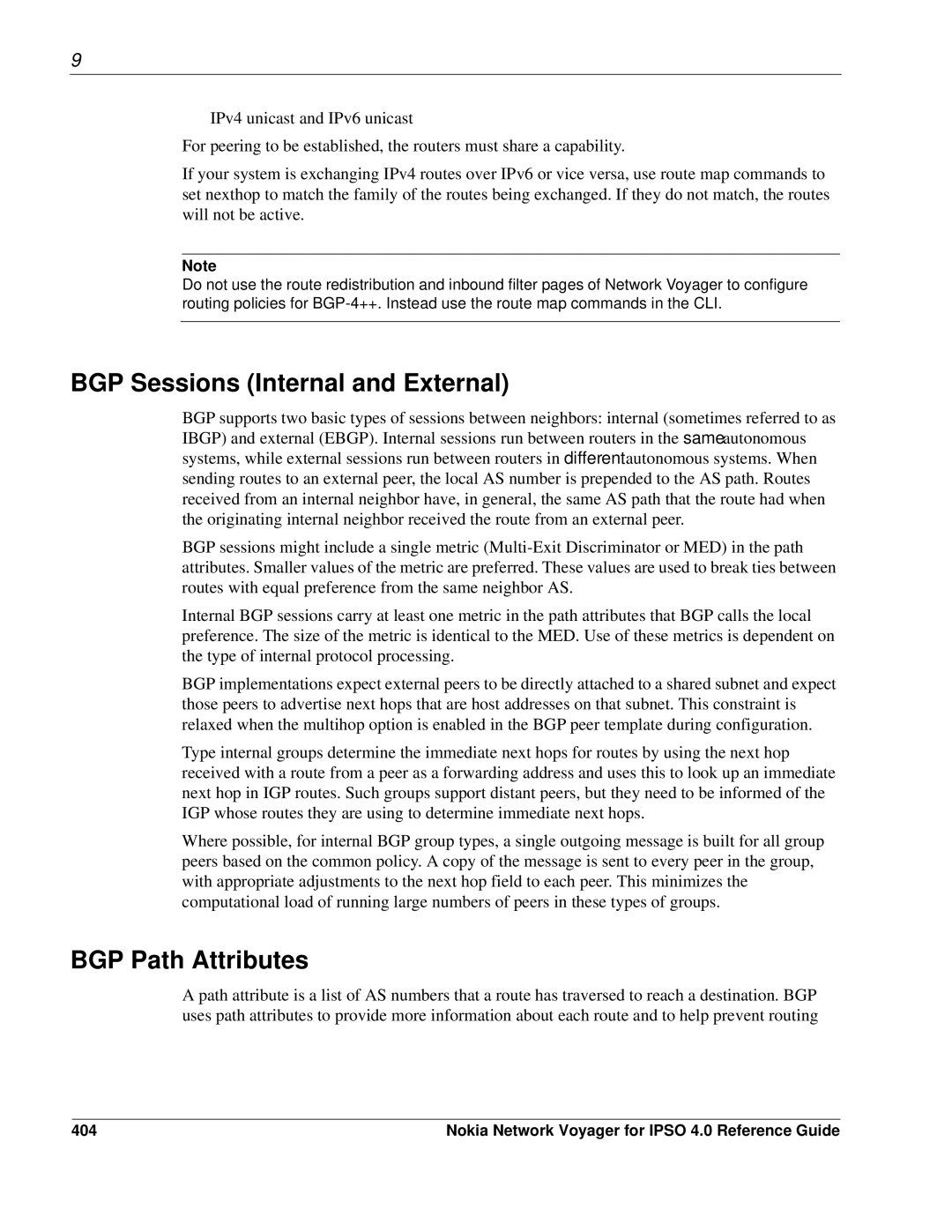
9
IPv4 unicast and IPv6 unicast
For peering to be established, the routers must share a capability.
If your system is exchanging IPv4 routes over IPv6 or vice versa, use route map commands to set nexthop to match the family of the routes being exchanged. If they do not match, the routes will not be active.
Note
Do not use the route redistribution and inbound filter pages of Network Voyager to configure routing policies for
BGP Sessions (Internal and External)
BGP supports two basic types of sessions between neighbors: internal (sometimes referred to as IBGP) and external (EBGP). Internal sessions run between routers in the same autonomous systems, while external sessions run between routers in different autonomous systems. When sending routes to an external peer, the local AS number is prepended to the AS path. Routes received from an internal neighbor have, in general, the same AS path that the route had when the originating internal neighbor received the route from an external peer.
BGP sessions might include a single metric
Internal BGP sessions carry at least one metric in the path attributes that BGP calls the local preference. The size of the metric is identical to the MED. Use of these metrics is dependent on the type of internal protocol processing.
BGP implementations expect external peers to be directly attached to a shared subnet and expect those peers to advertise next hops that are host addresses on that subnet. This constraint is relaxed when the multihop option is enabled in the BGP peer template during configuration.
Type internal groups determine the immediate next hops for routes by using the next hop received with a route from a peer as a forwarding address and uses this to look up an immediate next hop in IGP routes. Such groups support distant peers, but they need to be informed of the IGP whose routes they are using to determine immediate next hops.
Where possible, for internal BGP group types, a single outgoing message is built for all group peers based on the common policy. A copy of the message is sent to every peer in the group, with appropriate adjustments to the next hop field to each peer. This minimizes the computational load of running large numbers of peers in these types of groups.
BGP Path Attributes
A path attribute is a list of AS numbers that a route has traversed to reach a destination. BGP uses path attributes to provide more information about each route and to help prevent routing
404 | Nokia Network Voyager for IPSO 4.0 Reference Guide |
